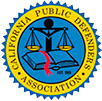Los Angeles law enforcement officers, including DUI patrol officers, use field sobriety tests to determine if a driver is driving while intoxicated. Most people don’t realize that these tests are voluntary and if you are not aware of that fact, it is likely you will end up performing these “tests” with the belief that they are mandatory. While there are numerous field exercises officers can use, only threetests have been researched by the government and found to be effective in determining whether a person is driving under the influence. Please be aware newer research shows that despite the government’s claim, officers are actually not able to reliably predict who is above the legal limit or too impaired to drive when evaluating an individual’s performance on these tests. Nonetheless, police officers usually rely on how a driver performs on these “tests” to justify an arrest for driving under the influence.
The three tests that have been deemed reliable by the federal government agency National Highway Traffic Safety Administration (“NHTSA”) include:
- Horizontal Gaze Nystagmus test
- Walk and Turn test, and
- One leg Stand test
These three “standardized” field sobriety tests are the only ones the federal government advises police departments use when investigating a driver’s level of intoxication. Other FSTs, including the Romberg test which is a modified position of attention test where the subject is asked to estimate 30 seconds in his or her head while standing with one’s head back and eyes closed, is very commonly performed. Reciting the alphabet and the finger-to-nose tests are also common tests officer requests drivers to perform. Yet, these tests have never been shown to be reliable in predicting any specific level of intoxication.
FSTS ARE NOT RELIABLE IN PREDICTING LEVEL OF INTOXICATION IN DUIS
Even when considering the standardized tests, research has shown that police officers are not able to reliably determine which drivers are over the legal limit and which drivers are not legally impaired. In fact, most of the time, officers fail to instruct and fail to interpret the tests correctly. In a study conducted in 1994, 21 completely sober individuals performed the three standardized field sobriety tests and experienced officers were asked to decide which subjects were over the legal limit and too impaired to drive. These officers found about half of these subjects (all of whom where stone-cold sober) were over the legal limit and were driving under the influence! (See Cole S, Nowaczyk RH., Field sobriety tests: are they designed for failure? Percept Mot Skills. 1994 Aug;79: p99-104. See also Burns & Moskowitz, 1977; Tharp, et al, 1981.)
In a DUI trial, a DUI defense attorney can often show that the FSTs are not reliable and in many cases, the accused did very well, despite the officer’s claim in a report that numerous “clues” of intoxication where observed.
The Preliminary Alcohol Screening test is another Field Sobriety test commonly used to decide if there is probable cause to arrest the driver for a DUI. It is typically a hand-held breath machine which the officer asks the driver to blow into on the side of the road just prior to the arrest. Unless you are under 21 years of age or on probation for a DUI, this preliminary breath test is also optional. Of course most officers won’t tell that to the driver, despite being legally required to.
The only test that is required to be taken under California’s Implied Consent law (VC 23612) is a chemical test of breath or blood after a lawful arrest. The chemical breath test is usually performed on a more accurate machine that is at the police station or in a trailer at a DUI checkpoint.
CALL DUI LAWYER ANN GOTTESMAN FOR A FREE CONSULTATION
If you are facing DUI charges in Los Angeles, Pasadena, Alhambra, West Covina or other court house in the county of Los Angeles, please contact me, attorney Ann Gottesman at (626) 710-4021 for a free consultation. I will meet with you confidentially to discuss your case and will answer any questions you have.









